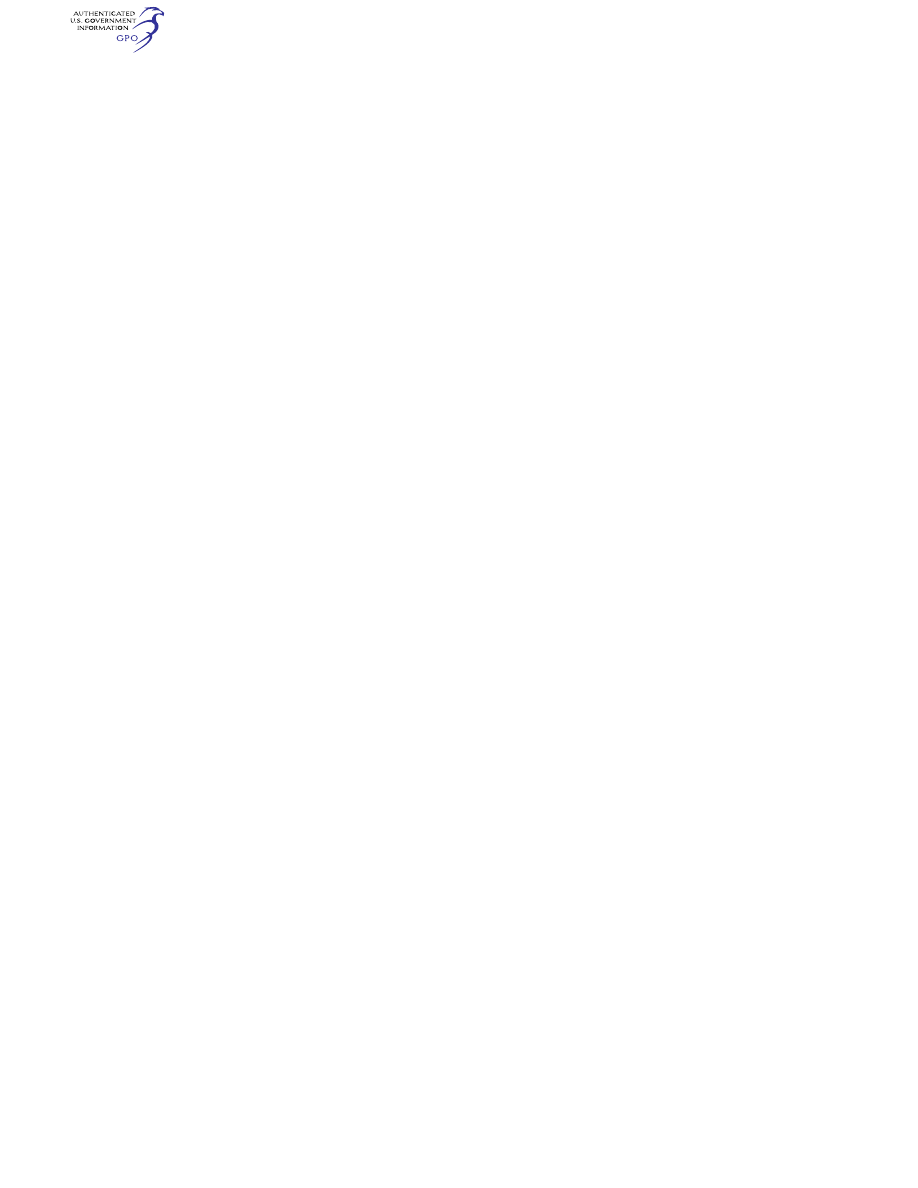
366
49 CFR Ch. XII (10–1–23 Edition)
§ 1544.235
individual completes recurrent train-
ing within one calendar month earlier,
or one calendar month after the date it
was required, that individual is consid-
ered to have completed the training in
the calendar month in which it was re-
quired.
§ 1544.235
Training and knowledge for
individuals with security-related
duties.
(a) No aircraft operator may use any
direct or contractor employee to per-
form any security-related duties to
meet the requirements of its security
program unless that individual has re-
ceived training as specified in its secu-
rity program including their individual
responsibilities in § 1540.105 of this
chapter.
(b) Each aircraft operator must en-
sure that individuals performing secu-
rity-related duties for the aircraft op-
erator have knowledge of the provi-
sions of this part, applicable Security
Directives and Information Circulars,
the approved airport security program
applicable to their location, and the
aircraft operator’s security program to
the extent that such individuals need
to know in order to perform their du-
ties.
§ 1544.237
Flight deck privileges.
(a) For each aircraft that has a door
to the flight deck, each aircraft oper-
ator must restrict access to the flight
deck as provided in its security pro-
gram.
(b) This section does not restrict ac-
cess for an FAA air carrier inspector,
an authorized representative of the Na-
tional Transportation Safety Board, or
for an Agent of the United States Se-
cret Service, under 14 CFR parts 121,
125, or 135. This section does not re-
strict access for a Federal Air Marshal
under this part.
[67 FR 8210, Feb. 22, 2002]
§ 1544.239
Known shipper program.
This section applies to each aircraft
operator operating under a full pro-
gram under § 1544.101(a) of this part and
to each aircraft operator with a TSA
security program approved for transfer
of cargo to an aircraft operator with a
full program or a foreign air carrier
under paragraphs § 1546.101(a) or (b) of
this chapter.
(a) For cargo to be loaded on its air-
craft in the United States, each air-
craft operator must have and carry out
a known shipper program in accord-
ance with its security program. The
program must—
(1) Determine the shipper’s validity
and integrity as provided in the secu-
rity program;
(2) Provide that the aircraft operator
will separate known shipper cargo from
unknown shipper cargo; and
(3) Provide for the aircraft operator
to ensure that cargo is screened or in-
spected as set forth in its security pro-
gram.
(b) When required by TSA, each air-
craft operator must submit in a form
and manner acceptable to TSA—
(1) Information identified in its secu-
rity program regarding a known ship-
per, or an applicant for that status; and
(2) Corrections and updates of this in-
formation upon learning of a change to
the information specified in paragraph
(b)(1) of this section.
[71 FR 30511, May 26, 2006]
Subpart D—Threat and Threat
Response
§ 1544.301
Contingency plan.
Each aircraft operator must adopt a
contingency plan and must:
(a) Implement its contingency plan
when directed by TSA.
(b) Ensure that all information con-
tained in the plan is updated annually
and that appropriate persons are noti-
fied of any changes.
(c) Participate in an airport-spon-
sored exercise of the airport contin-
gency plan or its equivalent, as pro-
vided in its security program.
§ 1544.303
Bomb or air piracy threats.
(a)
Flight: Notification. Upon receipt
of a specific and credible threat to the
security of a flight, the aircraft oper-
ator must—
(1) Immediately notify the ground
and in-flight security coordinators of
the threat, any evaluation thereof, and
any measures to be applied; and
(2) Ensure that the in-flight security
coordinator notifies all crewmembers
VerDate Sep<11>2014
13:18 Nov 27, 2023
Jkt 259235
PO 00000
Frm 00376
Fmt 8010
Sfmt 8010
Y:\SGML\259235.XXX
259235
skersey on DSK4WB1RN3PROD with CFR

367
Transportation Security Administration, DHS
§ 1544.305
of the threat, any evaluation thereof,
and any measures to be applied; and
(3) Immediately notify the appro-
priate airport operator.
(b)
Flight: Inspection. Upon receipt of
a specific and credible threat to the se-
curity of a flight, each aircraft oper-
ator must attempt to determine wheth-
er or not any explosive or incendiary is
present by doing the following:
(1) Conduct a security inspection on
the ground before the next flight or, if
the aircraft is in flight, immediately
after its next landing.
(2) If the aircraft is on the ground,
immediately deplane all passengers
and submit that aircraft to a security
search.
(3) If the aircraft is in flight, imme-
diately advise the pilot in command of
all pertinent information available so
that necessary emergency action can
be taken.
(c)
Ground facility. Upon receipt of a
specific and credible threat to a spe-
cific ground facility at the airport, the
aircraft operator must:
(1) Immediately notify the appro-
priate airport operator.
(2) Inform all other aircraft operators
and foreign air carriers at the threat-
ened facility.
(3) Conduct a security inspection.
(d)
Notification. Upon receipt of any
bomb threat against the security of a
flight or facility, or upon receiving in-
formation that an act or suspected act
of air piracy has been committed, the
aircraft operator also must notify TSA.
If the aircraft is in airspace under
other than U.S. jurisdiction, the air-
craft operator must also notify the ap-
propriate authorities of the State in
whose territory the aircraft is located
and, if the aircraft is in flight, the ap-
propriate authorities of the State in
whose territory the aircraft is to land.
Notification of the appropriate air traf-
fic controlling authority is sufficient
action to meet this requirement.
§ 1544.305
Security Directives and In-
formation Circulars.
(a) TSA may issue an Information
Circular to notify aircraft operators of
security concerns. When TSA deter-
mines that additional security meas-
ures are necessary to respond to a
threat assessment or to a specific
threat against civil aviation, TSA
issues a Security Directive setting
forth mandatory measures.
(b) Each aircraft operator required to
have an approved aircraft operator se-
curity program must comply with each
Security Directive issued to the air-
craft operator by TSA, within the time
prescribed in the Security Directive for
compliance.
(c) Each aircraft operator that re-
ceives a Security Directive must—
(1) Within the time prescribed in the
Security Directive, verbally acknowl-
edge receipt of the Security Directive
to TSA.
(2) Within the time prescribed in the
Security Directive, specify the method
by which the measures in the Security
Directive have been implemented (or
will be implemented, if the Security
Directive is not yet effective).
(d) In the event that the aircraft op-
erator is unable to implement the
measures in the Security Directive, the
aircraft operator must submit proposed
alternative measures and the basis for
submitting the alternative measures to
TSA for approval. The aircraft oper-
ator must submit the proposed alter-
native measures within the time pre-
scribed in the Security Directive. The
aircraft operator must implement any
alternative measures approved by TSA.
(e) Each aircraft operator that re-
ceives a Security Directive may com-
ment on the Security Directive by sub-
mitting data, views, or arguments in
writing to TSA. TSA may amend the
Security Directive based on comments
received. Submission of a comment
does not delay the effective date of the
Security Directive.
(f) Each aircraft operator that re-
ceives a Security Directive or Informa-
tion Circular and each person who re-
ceives information from a Security Di-
rective or Information Circular must:
(1) Restrict the availability of the Se-
curity Directive or Information Cir-
cular, and information contained in ei-
ther document, to those persons with
an operational need-to-know.
(2) Refuse to release the Security Di-
rective or Information Circular, and in-
formation contained in either docu-
ment, to persons other than those with
an operational need-to-know without
the prior written consent of TSA.
VerDate Sep<11>2014
13:18 Nov 27, 2023
Jkt 259235
PO 00000
Frm 00377
Fmt 8010
Sfmt 8010
Y:\SGML\259235.XXX
259235
skersey on DSK4WB1RN3PROD with CFR

